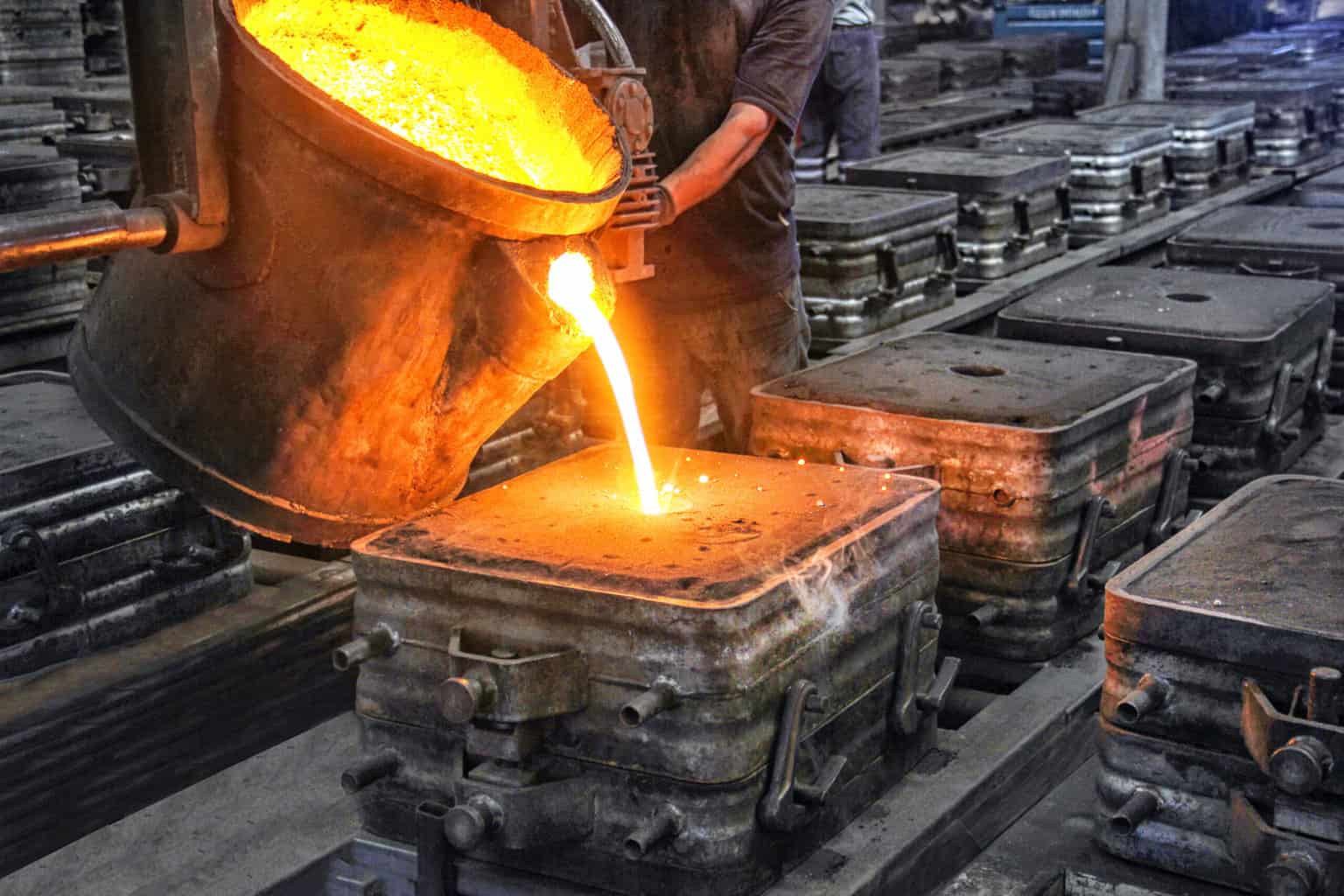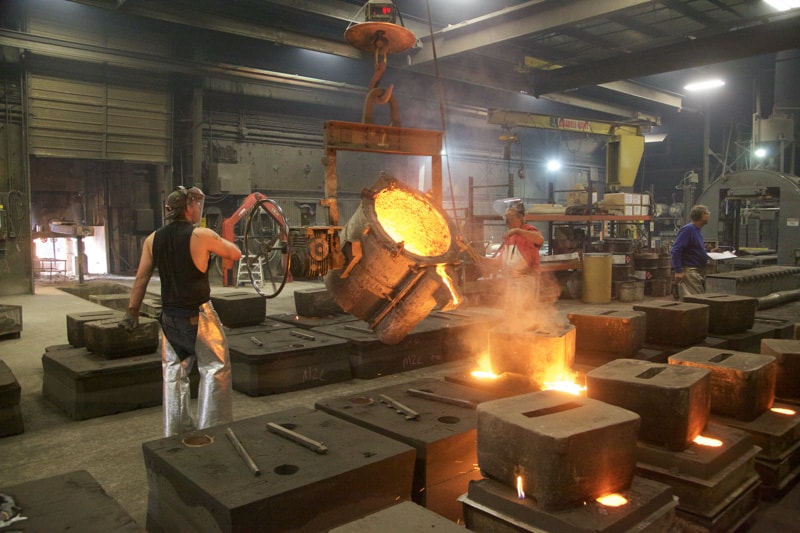Top Techniques for Enhancing Productivity in a Casting Foundry
Understanding the Procedures and Benefits of a Spreading Shop
Casting factories play an important role in modern production. They utilize different strategies to transform liquified materials into strong types, tailored for certain applications. Each approach, from sand Casting to pass away casting, uses distinct advantages, affecting industries like auto and aerospace. Recognizing these procedures exposes not only their sensible benefits but likewise the advancements driving their development. What effects do these innovations hold for future production methods and sustainability initiatives?
Summary of Casting Procedures
Numerous casting processes exist, they all share the essential principle of changing fluid product into solid kinds. This change is achieved via putting liquified substances into molds, where they cool and solidify right into preferred forms. Various procedures accommodate details products and applications, consisting of steel, plastic, and ceramic spreading. Pass away Casting is frequently employed for steels, using high stress to assure thorough layouts and smooth surfaces. Financial investment spreading, additionally understood as lost-wax casting, permits for complex designs and is appropriate for intricate geometries. Other methods, such as gravity and centrifugal spreading, make use of the force of gravity or rotation to fill up molds efficiently. Each procedure has special benefits regarding scalability, product, and accuracy compatibility, causing diverse applications throughout sectors. Comprehending these processes is important for selecting one of the most appropriate technique for a provided job, ensuring the most effective cause manufacturing and manufacturing.
Sand Casting: Techniques and Applications

Once the mold is ready, molten steel is put right into the tooth cavity, where it cools and solidifies. After cooling, the sand is removed, revealing the actors things. Sand Casting is preferred for its cost-effectiveness, versatility, and ability to produce both little and large amounts. In addition, it suits a vast array of steels, consisting of light weight aluminum, bronze, and iron. On the whole, sand Casting remains a fundamental technique in Foundry procedures, allowing manufacturers to fulfill varied manufacturing requires successfully.
Financial Investment Spreading: Accuracy and Detail
Financial investment Casting is a highly exact manufacturing procedure that produces thorough parts through making use of a wax pattern. This technique applies throughout various sectors, consisting of aerospace, automotive, and medical, where accuracy and surface coating are essential. Understanding the details of financial investment Casting can illuminate its benefits in generating intricate geometries and top quality parts.
Process Overview
When thinking about the complexities of casting processes, investment Casting sticks out for its capability to generate intricate shapes with amazing precision and information. This strategy includes creating a wax pattern, which is coated in a ceramic shell and ultimately heated up to remove the wax, leaving a hollow mold. As soon as the mold is ready, liquified metal is poured in, loading the detailed tooth cavities. The cooling procedure enables the metal to strengthen, after which the ceramic covering is escaped, disclosing the ended up element. This technique is particularly advantageous for creating high-quality get rid of smooth surface areas and tight tolerances. Financial investment Casting minimizes product waste and enables for the unification of complicated geometries that are challenging to accomplish via other casting methods.
Applications and Industries
Although financial investment Casting is commonly linked with the aerospace and automotive sectors, its versatility reaches a large range of applications throughout different markets. This technique is particularly useful in manufacturing elaborate components for medical devices, where precision is important for functionality and safety. Additionally, the energy market benefits from financial investment Casting in the manufacturing of elements for pumps and generators, showcasing its dependability under extreme conditions. The electronic devices sector also employs financial investment Casting to produce complex real estates and ports that require fine detail. The protection market uses this Casting method for creating resilient, light-weight elements. On the whole, investment spreading's ability to accomplish high degrees of detail and precision makes it an important procedure in multiple industries.
Pass Away Casting: Rate and Efficiency
Pass away Casting is identified for its fast manufacturing cycle, enabling producers to produce components swiftly and effectively. This approach not only assures high accuracy in the completed items however likewise adds to an economical production process. Therefore, die Casting stands out as a recommended selection in various industries looking for to enhance manufacturing without jeopardizing quality.
Rapid Manufacturing Cycle
As makers look for to improve productivity, the quick manufacturing cycle inherent in die Casting becomes a substantial advantage. This process permits for the quick manufacturing of parts, allowing manufacturers to meet high need effectively. The ability to create large quantities in a brief timeframe lowers lead times, improving the total production operations. Additionally, computerized die Casting makers operate at a broadband, additionally speeding up output while maintaining constant high quality. This performance not only decreases labor prices however additionally optimizes source usage, adding to even more sustainable manufacturing methods. By making use of quick manufacturing cycles, firms can respond quickly to market adjustments, guaranteeing competition and promoting technology in product advancement. Generally, pass away spreading's speed is a crucial aspect in modern manufacturing success.
High Accuracy Elements
The quick manufacturing cycle in die Casting not only enhances speed but additionally greatly adds to the development of high precision parts. This process involves infusing molten metal into a mold under high pressure, permitting for detailed designs and limited resistances. As an outcome, elements produced via die Casting display minimal variation in dimensions, making sure uniformity across large batches. This precision is particularly beneficial in industries such as automobile and aerospace, where specific requirements are crucial. Furthermore, the high-speed nature of die Casting decreases the time needed for manufacturing while maintaining top quality criteria. Subsequently, manufacturers can rely on die casting to deliver accurate components effectively, fulfilling the needs of modern-day design without jeopardizing on performance or reliability.
Affordable Manufacturing Process
Optimizing manufacturing efficiency, pass away Casting sticks out as an economical production process that greatly lowers labor and material costs. This method utilizes liquified metal, which is infused right into a mold under high pressure, enabling fast manufacturing of complex forms with very little waste. The high-speed nature of die Casting not just speeds up the manufacturing timeline however also assures consistency across large volumes, making it perfect for automation. Additionally, the toughness of the molds utilized cause longer manufacturing runs without the demand for regular substitutes, consequently reducing costs. Pass away casting arises as a recommended option for makers looking for to stabilize quality and affordability while fulfilling high need in various markets.
Advantages of Utilizing Casting Factories
Countless benefits emerge from utilizing Casting foundries in making processes. One considerable advantage is the ability to create complex forms and detailed layouts that may be challenging or impossible to accomplish with various other techniques. This versatility enables for higher style creative thinking and development. Furthermore, casting foundries can accommodate a wide range of materials, including numerous steels and alloys, which widens the opportunities for item applications.
One more advantage is the scalability of production. Foundries can efficiently produce both big and small amounts, making them suitable for varied sectors, from auto to aerospace. The Casting procedure additionally lessens material waste, as excess material can typically be recycled within the shop, adding to sustainability initiatives.
Casting shops commonly have developed experience and progressed technology, making certain that they can meet specific manufacturing requirements while optimizing functional efficiency. These advantages collectively improve the overall performance of producing procedures.
Quality Assurance in Casting Manufacturing
Effective quality assurance in Casting production is important for making certain that the final items meet why not look here the called for standards and specs. This procedure includes organized monitoring and examination at various stages of production, from resources choice to the last inspection of actors parts. Key practices consist of product testing, dimensional evaluations, and comprehensive assessment of surface area finishes.
Casting factories usually execute analytical process control (copyright) methods to identify variations and maintain uniformity in manufacturing - Casting Foundry. By using sophisticated technologies such as digital dimension tools and computerized assessment systems, foundries can improve precision and minimize human mistake
Normal audits and adherence to sector criteria, such as ISO certifications, better strengthen the high quality guarantee structure. Inevitably, strenuous high quality control not just lessens defects and waste however additionally boosts consumer complete satisfaction and depend on, placing the Foundry as a reliable vendor in the affordable market.

Advancements Shaping the Future of Casting
As the Casting industry evolves, technologies are essentially reshaping manufacturing procedures and boosting effectiveness. Advanced technologies such as additive production, or 3D printing, enable the rapid production of complex mold and mildews, decreasing preparations and material waste. Automation is likewise playing a vital duty; robotics improve recurring tasks, enhancing accuracy and reducing labor prices.
Additionally, the assimilation of expert system and artificial intelligence boosts the predictive abilities of shops, enabling real-time top quality tracking and procedure optimization. These innovations promote earlier discovery of possible defects, reducing scrap rates.
Sustainability is an additional vital consideration driving innovation, with many foundries taking on energy-efficient methods and environmentally friendly materials. The shift towards round economic situation concepts urges recycling and reusing materials, reducing environmental influence.
Jointly, these technologies not just improve operational efficiency but additionally place the Casting industry for a more technologically advanced and lasting future. Casting Foundry.
Often Asked Questions
What Materials Are Generally Utilized in Casting Foundries?
Common products utilized in casting foundries Go Here consist of steels such as iron, bronze, and light weight aluminum, in addition to different alloys. Additionally, sand and material are frequently made use of for mold and mildews, improving the Casting process and the high quality of finished items.
How Lengthy Does the Casting Process Typically Take?
The Casting process typically takes numerous hours to days, depending on factors such as the intricacy of the mold and mildew, the product used, and the cooling time needed. Each task has distinct needs influencing period.
What Industries Primarily Make Use Of Casting Foundry Services?
Numerous industries use casting Foundry solutions, consisting of automobile, manufacturing, building, and aerospace. These sectors rely upon casting for generating intricate metal components, making certain longevity and precision in their items, boosting general performance and performance.
Exist Environmental Problems Connected With Casting Factories?
Environmental worries associated to casting shops include air pollution from emissions, waste monitoring issues, and resource intake. These variables impact local ecological communities, motivating industry stakeholders to seek lasting practices and innovations to alleviate damaging impacts.
Just How Do Casting Foundries Ensure Employee Safety?
Casting foundries implement rigorous safety methods, consisting of personal safety tools, normal training, and adherence to market guidelines. Casting Get More Info Foundry. They carry out regular safety and security audits to recognize risks, guaranteeing a much safer working environment for their employees and minimizing threats
